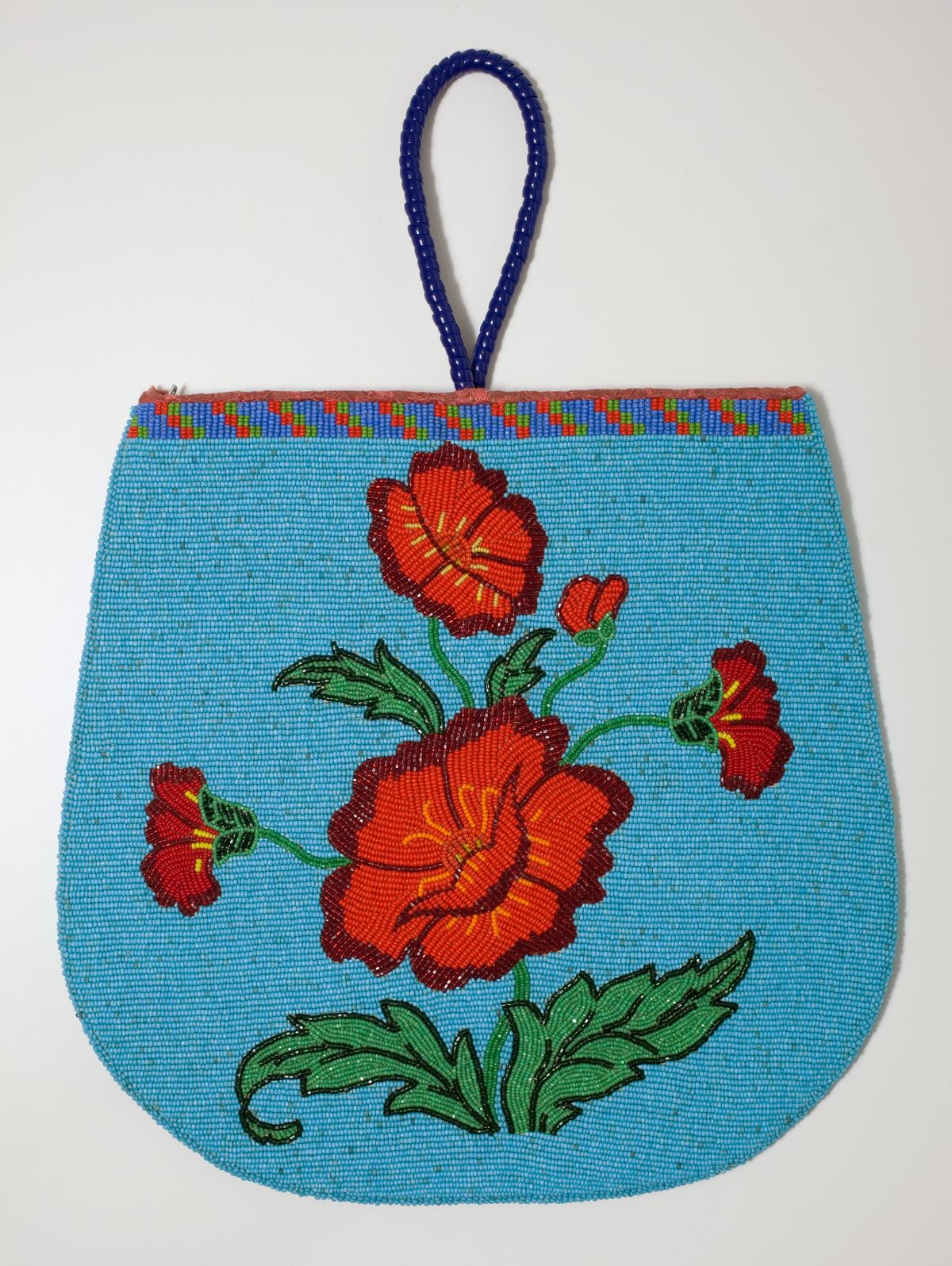Family Fun: Northwest Museum of Arts and Culture features exhibits for engagement, exploration
A women’s bag made in the 1950s by Elizabeth Leach Quintana, a member of the Spokane Tribe. (Northwest Museum of Arts and Culture)
Step inside the Northwest Museum of Arts and Culture on a hot day, and the first thing you might notice is how cool it is.
To protect its collections and any traveling exhibits, the temperature in the museum never goes above 72 degrees or below 68, said exhibitions manager Brooke Shelman Wagner. It almost feels chilly on a hot summer day.
And, once visitors go downstairs, they’ll find exhibits that can keep families engaged and exploring.
“What We Make: Nature as Inspiration” is a maker space inside a gallery where people can see pieces from the MAC’s collection and make their own pieces in response.
It’s an idea that Shelman Wagner has had brewing for years and the first of four annual exhibits that will feature maker spaces. The goal, Shelman Wagner said, “is to remind people that we’re all makers.”
Inside the exhibit, there are four areas with works by one or more makers:
• “Inspired by Landscape” features works by Joseph Goldberg and Wesley Wehr. The two artists were both born and raised in Washington state and were both inspired by the landscapes of Eastern Washington.
“This is a story of their friendship and the way they were inspired by the land, a land we are all very familiar with,” Shelman Wagner said.
Visitors are invited to use paper and crayons provided by the museum to create their own landscapes. Some of those are displayed as part of the exhibit.
• “Drawing With Beads” displays beaded bags with floral or animal designs. Then, visitors can create their own designs with beads.
• “Fur, Feathers, Flowers and Fashion” features a few of the museum’s hundreds of hats, as well as materials and tools used in the process. Visitors are invited to make their own hats with paper, ribbon and other supplies provided by the museum.
“It’s been really fun to watch the kids come out with their crazy hats,” Shelman Wagner said.
• “To Fly Like a Bird” has Shelman Wagner’s favorite object in the exhibit: an 8-foot propeller.
It was made by Reuben Bowers, a Harrington blacksmith who flew the first plane in the Inland Northwest just a few years after the Wright Brothers.
“Because he was doing this so early, he was featured in so many articles,” Shelman Wagner said. Because of that, the museum has direct quotes about his process.
“He experimented and at one point he crashed a plane that he’d worked six months on, and then he had to start over from scratch,” she said. “It’s what we’re trying to focus on here, people trying and maybe failing, but being willing to try again.”
In that section, visitors are invited to make their own flying machines and test them in a wind tunnel.
“It’s been fun to watch parents work with their kids to say, ‘OK, what would you change to make it go higher?’ ” Shelman Wagner said.
Each section highlights the process of making. For instance, in the beading section, there are samples created by the late Elizabeth Leach Quintana that show the steps in making a design.
In the landscape section, there are sketches of works in progress. To help visitors experience the making process, the museum hired teaching artist Lisa Soranaka and interns. A second teaching artist and group of interns will take over in September.
“It’s kind of lovely to watch the families gather around the tables,” Shelman Wagner said. “Sometimes it’s really quiet, so you can feel the thinking happening. Sometimes it’s really loud.”
“What We Make: Nature as Inspiration” continues through Jan. 9.
Also at the museum:
“Roots of Wisdom: Native Knowledge, Shared Science” is a traveling exhibit from the Oregon Museum of Science and Industry that highlights stories of Native communities finding innovative ways to combine traditional knowledge and modern science to solve ecological problems.
The exhibit features videos and interactive games. In one section, visitors learn about the Confederated Tribes of the Umatilla Indian Reservation’s work to protect lamprey. At another, families can gather around a faux fire pit to hear recorded stories.
“Roots of Wisdom” continues at the MAC through Sept. 5.
“American Original: The Life and Work of John James Audubon” is in the museum’s main gallery. It features original prints, paintings and personal artifacts from Audubon’s life, on loan from the John James Audubon State Park Museum in Henderson, Kentucky.
Many of the items have never left Kentucky before, Shelman Wagner said.
Make sure to check out the jewelry Audubon had made from his hair for his future wife. And, there are pages from his manuscripts. “It’s so cool to see an artist’s handwriting,” Shelman Wagner said.
“Justin Gibbens: Birds and Beasts” is a companion to the Audubon exhibit. Gibbens is a Thorp, Washington, artist who’s trained in scientific illustration and creates stylized images of flora and fauna.
The Audubon and Gibbens exhibits continue through Sept. 19.
Shelman Wagner encourages families to come to the museum. It’s a spot to explore and get inspiration from the past, she said. “This is a good, cool spot where you can play.”





